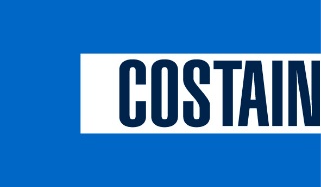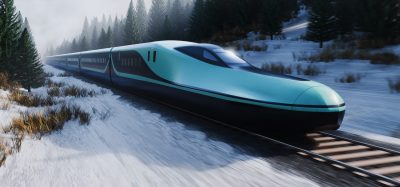The search for the train of the future
Posted: 28 May 2008 | | No comments yet
There is no doubt that trains are the future of transport – and for NSB, the future starts now, as the groundwork is being laid to make the train the number one means of transport in Norway. Emil Eike, together with Stein Nilsen and Torod Gjermundsen, explain to readers of Global Railway Review, how NSB is planning its largest ever order for new trains, and how it has also launched a comprehensive project to upgrade existing rolling stock.
There is no doubt that trains are the future of transport – and for NSB, the future starts now, as the groundwork is being laid to make the train the number one means of transport in Norway. Emil Eike, together with Stein Nilsen and Torod Gjermundsen, explain to readers of Global Railway Review, how NSB is planning its largest ever order for new trains, and how it has also launched a comprehensive project to upgrade existing rolling stock.
There is no doubt that trains are the future of transport – and for NSB, the future starts now, as the groundwork is being laid to make the train the number one means of transport in Norway. Emil Eike, together with Stein Nilsen and Torod Gjermundsen, explain to readers of Global Railway Review, how NSB is planning its largest ever order for new trains, and how it has also launched a comprehensive project to upgrade existing rolling stock.
From a European rail perspective, NSB is a relatively small-scale actor, serving primarily the Norwegian market. In 2007, the train operating company carried a total of 50.4 million passengers, representing an increase of 5.1% over the previous year.
“We envisage the train as the number one form of transport in the future, but only on condition that we can deliver what the customer expects,” explains Mr. Nilsen. “We have therefore taken the first steps towards the biggest ever procurement of rolling stock in NSB’s history. By the end of the year, we will have signed a contract for the acquisition of 40-60 Multiple Unit trains, with an option for a further 100 train sets.”
Focused initiative
The new trains will make up the first delivery of NSB’s next-generation rolling stock.
“We have adopted a strategy for the future which consists of having the fewest possible different types of rolling stock, in order to increase our flexibility and minimise maintenance costs. This initiative is now well underway,” says Mr. Nilsen.
In the first instance, NSB will acquire rolling stock to cope with journeys up to four hours. The tendering companies have been asked to clarify how these same trains can also be used on commuter routes and stretches with journey times of up to eight hours.
Mr. Nilsen adds, “If we are able to use the same units for all our rail service output on electrified lines, this will represent substantial added value. But equally we cannot allow ourselves to compromise too much.”
Universal design
One area that is steadily growing in importance in the transport sector is concerning universal design. The requirement specifications are explicit and accessibility for all is a very important aspect for NSB.
“NSB and the Norwegian authorities agree that the new trains must be the best they can be, for all passengers,” explains Mr. Eike. “It is therefore key that, from day one, we make clear our wish to offer the best possible accessibility for all passengers, whatever their needs.”
To optimise the requirement specifications for universal design, NSB has received assistance from major Norwegian disability organisations.
Mr. Eike continues, “We have set up a working group through which the Norwegian disability organisations contribute their expertise in this area. This has provided us with a lot of insight into how we, as a carrier, should be approaching universal design. The good thing about the universal design approach is that it benefits everyone, rather than just a small group of customers.”
Reliability
For Project Manager Mr. Eike, one word has almost become a mantra – reliability. He comments, “Norway has a rail network that is 95% single-track. On the rest of the network, capacity is close to bursting point. So it is crucial for NSB that the trains we acquire do not break down, to the detriment of large parts of our service output.”
The issue of reliability has been drilled into everyone who is working on the project. With its present fleet of 180 train sets, NSB does not have large reserves to call on to fulfil its transport mission.
Mr. Eike continues, “Experience shows that tried-and-tested technology increases reliability. So my mandate is to purchase trains that have preferably already been fully tested by other train operators. If we manage to acquire a reliable train, we will have done a good job.”
Precise evaluation
In spring 2008, hectic evaluation work is ongoing on the five submitted tenders. 70 staff from a range of departments are involved in ensuring that NSB makes the best purchase for its next-generation trains. Many thousands of pages of tender documents are being reviewed in the search for the winning option. A shortlist will now be prepared, using set criteria, of the trains that appear to be best. NSB will then be negotiating with the suppliers of these to ensure even better trains. The supplier who comes out on top after the negotiations will have won the tender.
“The fact that we have opted to set up such a large evaluation team says everything about the significance and complexity of the task,” explains Mr. Gjermundsen. “Having a wide-ranging team with solid expertise from all specialist environments will give us good trains.”
Mr. Eike adds, “The process is now underway and we will be signing the contract during 2008. But we still need everyone to stick at it and keep up their strong commitment.”
The customers’ ambassador
In the final analysis, what really counts is the customers and their perception of the new trains.
“There is no point in us finding a train with the best bogies or the best driver compartment, if the customers are not happy with it,” explains Mr. Gjermundsen. “So our evaluation also attaches great importance to the customer facilities.” Mr. Gjermundsen also stresses that the new trains must allow for future growth. “50% of the trains we are buying are to replace old rolling stock, and the remainder will go to increase our capacity. This is a sorely needed increase. Our passenger numbers have been rising steadily over recent years.”
The Senior Executive in NSB’s Passenger Train Division, Stein Nilsen, is in no doubt about who actually calls the shots: “If we don’t find trains and train products which the customers want, they stop using our services. This makes it important to consider customer facilities in our choice of new trains, but we will still be upgrading older rolling stock.”
Great interest
“In early summer 2007, information was sent out to a number of train suppliers around the world. Eleven of these came to the tenderers’ meeting in Norway and five train manufacturers were qualified and subsequently submitted tenders,” recounts Tormod Gjermundsen, who believes the way NSB is thinking, in terms of the flexible use of rolling stock, appeals to the suppliers. “Being able to supply a train that can be used for different production tasks will put them in a preferential position. For this reason, the tenderers have devoted a lot of resources to showcasing the flexibility they can offer,” explains Mr. Gjermundsen.
As a market for trains, Norway is a relatively small country in comparison with the major European players, but it is a market that is both demanding and transparent. That is to say that it requires something extra of a train to achieve the absolutely key reliability level that is being demanded.
“A train which succeeds under the infrastructure, climatic and topographical condition characteristics of Norway will forever afterwards have proof of the robustness of its operating capabilities,” says Mr. Eike.
In addition, such success will receive a lot of attention during the length of this elongated country, throughout the time that this acquisition has national prominence; there will be focus from all the media as well as the central authorities during the period of delivery.
“A successful delivery won’t fail to be noticed in our market, and NSB can promise the winning supplier that we will offer him all the write-ups and attention he justly deserves. We are confident that a successful delivery of reliable trains to NSB will turn out to be a stamp of quality for any train manufacturer,” concludes Mr. Eike.






